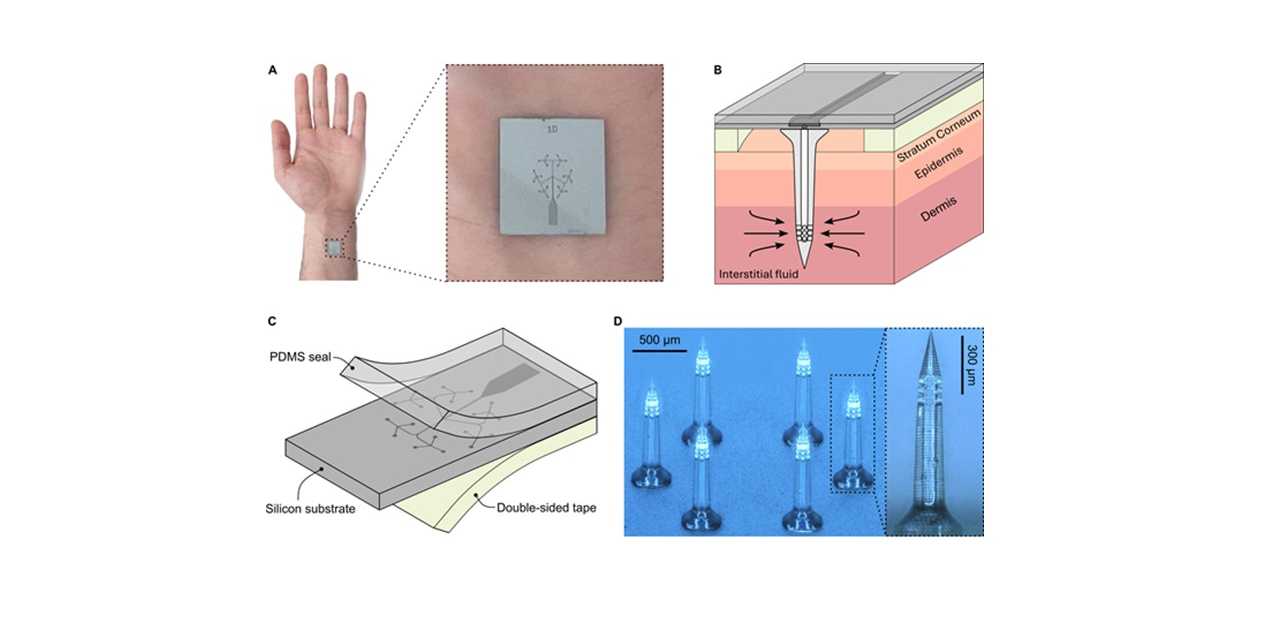Cell Biomaterials on Microneedles
We demonstrated the direct 3D-printing of hollow, polymer microneedles onto microfluidic chips for interstitial fluid extraction. Research led by Tiago Elias Abi-Ramia Silva et al. in collaboration with the University Hospital Zürich.

Here, the direct 3D printing of polymer hollow microneedles on silicon-based microfluidic devices and the successful in vivo extraction of interstitial fluid (ISF) are demonstrated. Our additive manufacturing approach enables the versatile combination of materials and rapid prototyping of microneedle geometry. After improving the design through finite element modeling, hollow microneedle geometries were printed by two-photon polymerization and experimentally characterized with mechanical and fluidic tests. Microneedles were fabricated with high accuracy (i.e., 997 ± 2 μm) and reliably interfaced with the microfluidic chip (i.e., centerline alignment within 5% of diameter). The needles demonstrated sufficient mechanical strength (i.e., 411 ± 3 mN per needle) to endure at least 10 consecutive insertions into simulated skin. Biocompatibility and ISF extraction were demonstrated in in vivo 72 h tests, showing the safety and reliability of our approach. Such a platform is promising for minimally invasive, continuous monitoring of biomarkers in ISF, aiding in medical diagnoses and personalized health treatments.
3D-printed polymer hollow microneedles on microfluidic platforms for minimally invasive interstitial fluid extraction
Tiago Elias Abi-Ramia Silva, Stephan Kohler, Nicolas Bartzsch, Felix Beuschlein, Andreas T. Güntner
ScienceDirect1
25.022025
Journal Link: external page 3D-printed polymer hollow microneedles
ETH Research Collection: external page 3D-printed polymer hollow microneedles